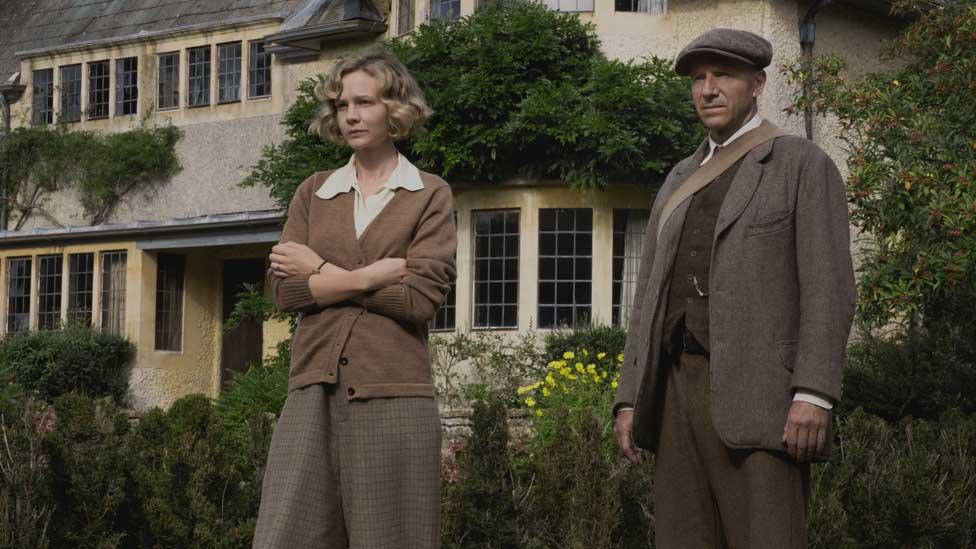Sutton Hoo ship replica build takes next step forward
- Published
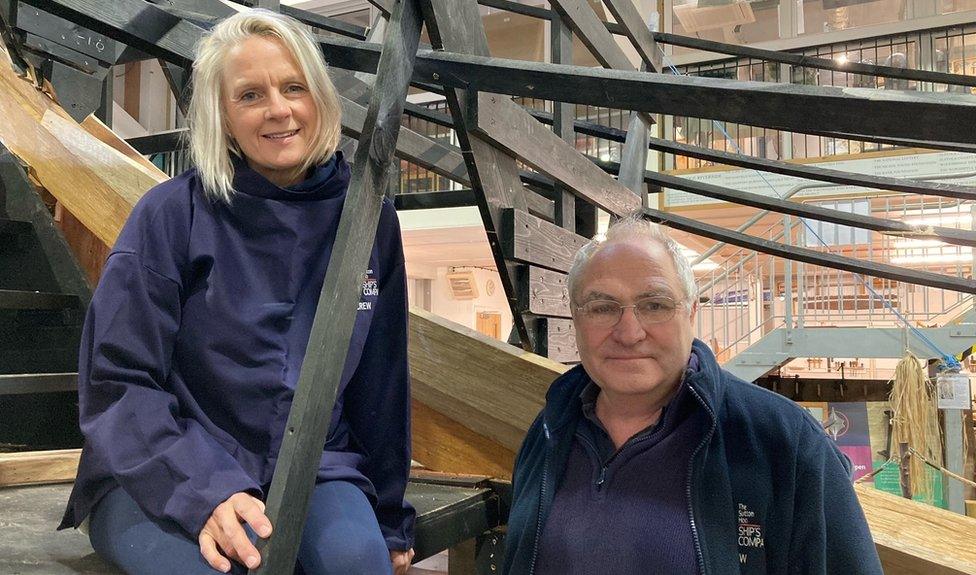
Project manager Jacq Barnard and master shipwright Tim Kirk said they were "delighted" the replica of ship found at Sutton Hoo would be taking on its full shape
Work to start nailing up the hull of a replica of the Anglo-Saxon ship found at Sutton Hoo has got under way.
The 88ft (27m) reconstruction of the burial ship, excavated in 1939, is being built in a shed beside the River Deben in Woodbridge, Suffolk.
The story of its discovery was told in the Netflix film The Dig, starring Carey Mulligan and Ralph Fiennes.
Project leaders said building the hull was a "big step as it signals the ship is going to take on its full shape".
Currently, the team behind the £1.5m scheme have built the "backbone" of the ship - including the keel, stem and sternpost - and now they have started attaching planks with rivets.
Master shipwright Tim Kirk said it would take a year for 100 oak planks to be nailed on.
"This time next year, we should see the whole ship in its full glory," he added.
It is hoped the ship can be launched into the Deben in 2024, just across the river from the Sutton Hoo estate.
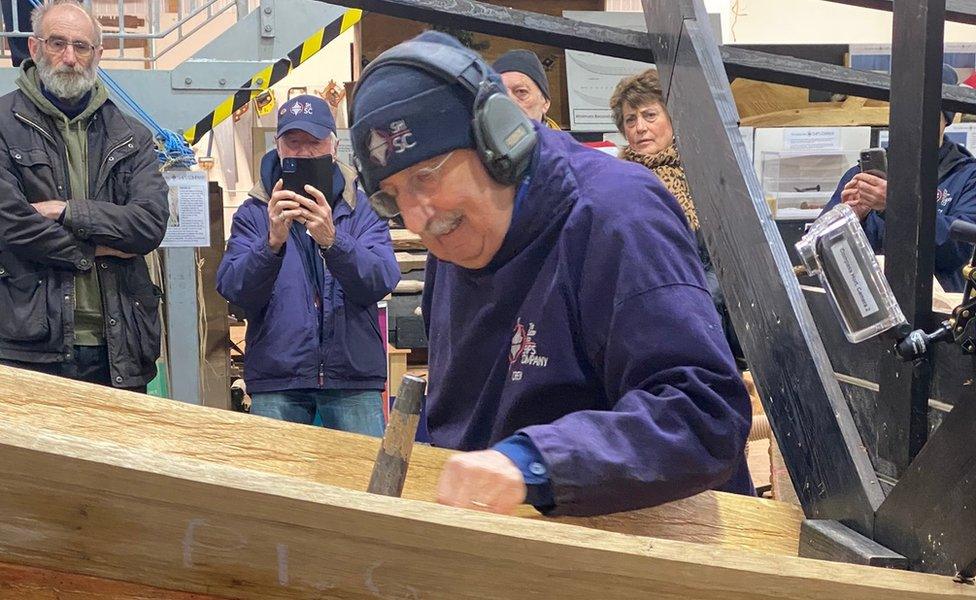
The first nail has been added to the hull of the ship
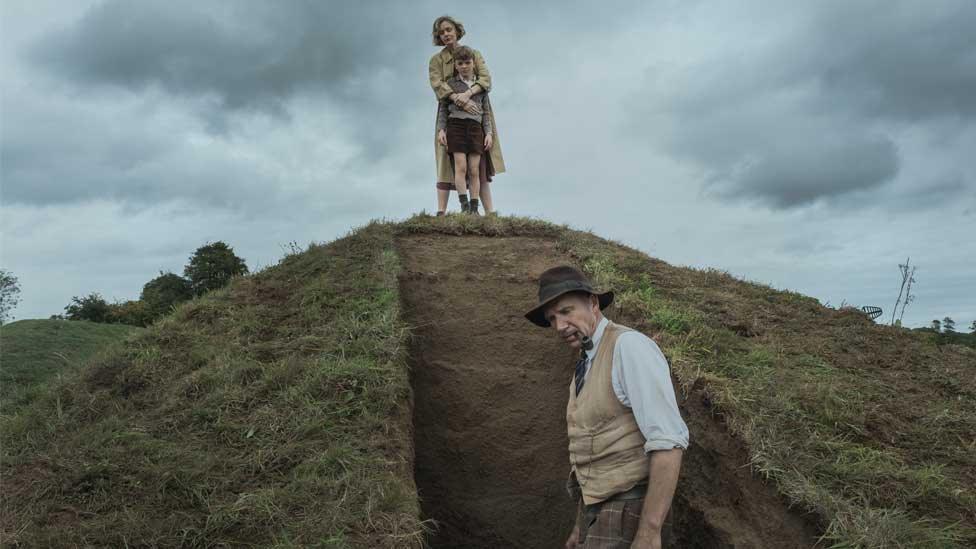
The Dig starred Carey Mulligan as Sutton Hoo landowner Edith Pretty and Ralph Fiennes as the archaeologist Basil Brown
Sutton Hoo is thought to be the final resting place of the King Raedwald - the 7th Century Anglo-Saxon ruler of East Anglia.
Treasures unearthed there have been described as one of "greatest archaeological discoveries of all time".
Although archaeologists uncovered an imprint of the original ship, all of its timber had rotted away in the acidic soil - but its iron rivets remained.
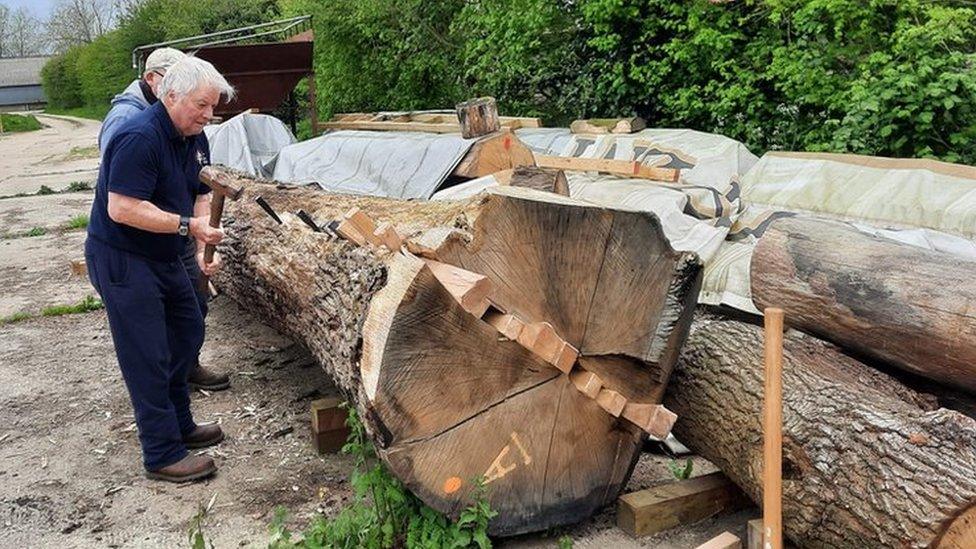
The wood used to make the planks for the ship's hull have come from 20 oak trees
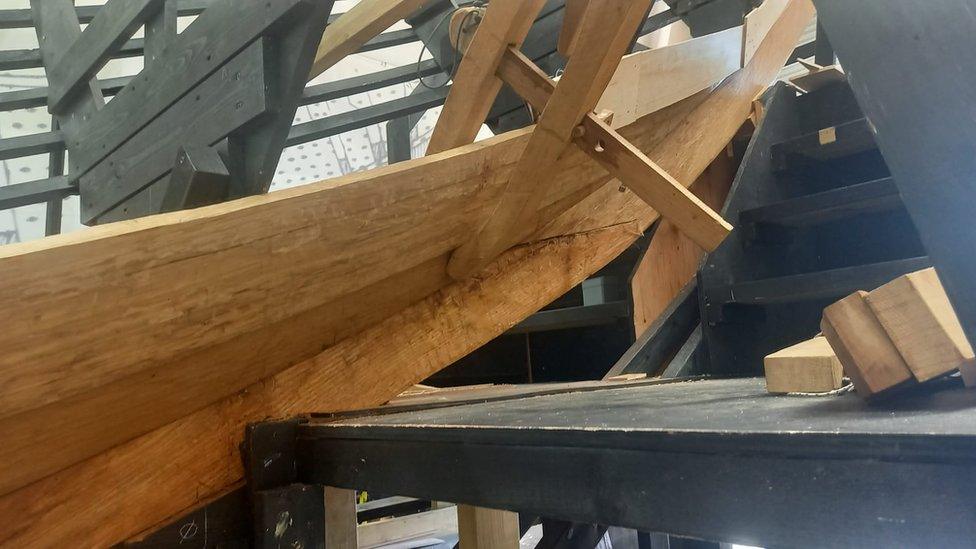
Mr Kirk said it would take a year for all 100 of the oak planks to be nailed on
Sutton Hoo Ship's Company, the charity behind the reconstruction project, started the design phase in 2016 and volunteers have been using traditional methods to build the ship.
Project manager Jacq Barnard said they were "delighted" to be at this stage of the build process.
"This really is significant because once we've started to put the planks on, we'll start to see a proper ship," she said.
Mr Kirk said all 3,598 rivets had to be nailed by hand and it was a three-person job.
He said each plank took 40 hours to make and they were aiming to make two planks a week.
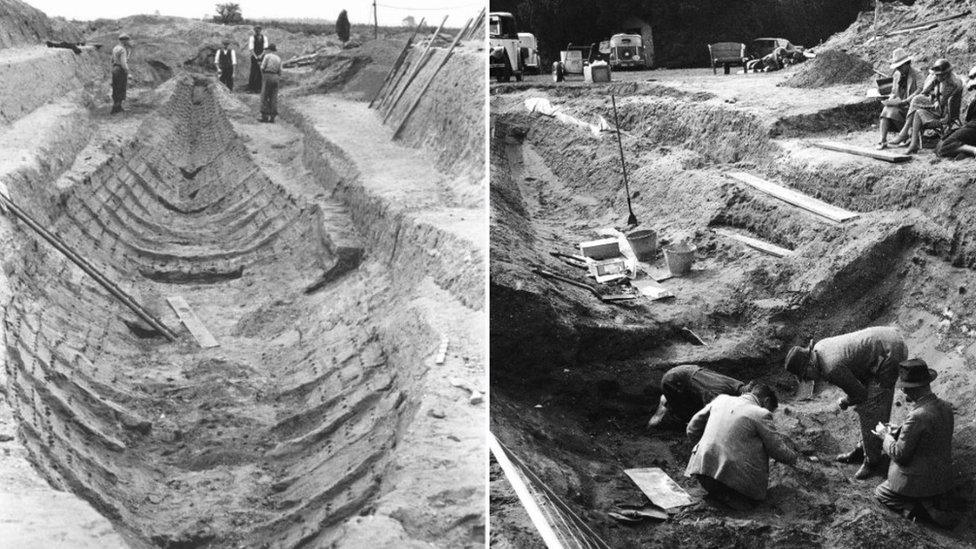
The outline of the ship was discovered in 1939. The wood had disappeared but its iron rivets remained
The planks are being made from 20 oak trees. Four have been donated by the National Trust from its Blickling Hall estate in Norfolk, with the rest also being donated by other benefactors.
For every oak used, Sutton Hoo Ship's Company plans to plant 20 trees.
Ms Barnard said they had 90 volunteers but they needed more people, with different skillsets, for the project.

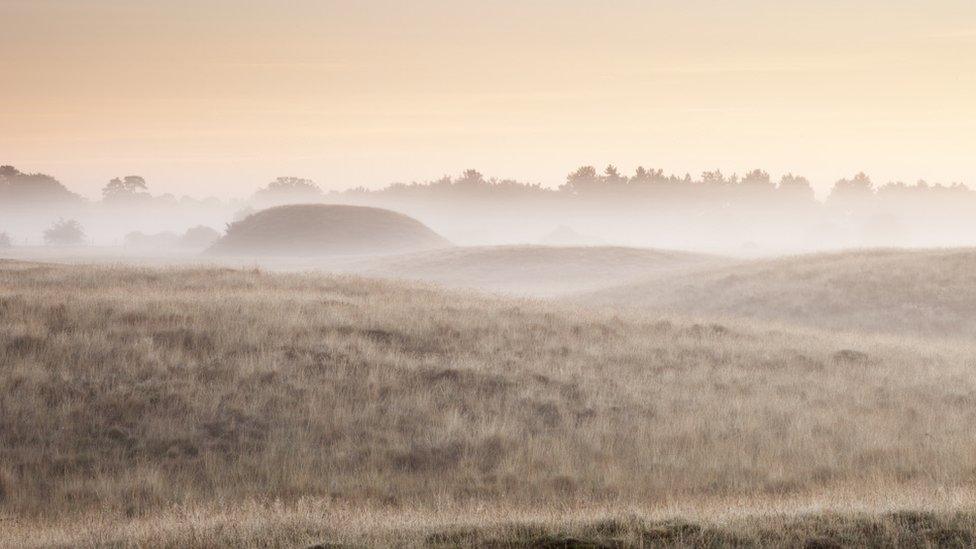
What was found at the Sutton Hoo burial mounds?
The 86ft (27m) oak ship was the tomb of an Anglo-Saxon ruler who was buried around 1,300 years ago along with his possessions, warrior's uniform and equipment for hosting a feast in the afterlife
The treasures found inside included a warrior's iron helmet, a magnificent sword, Byzantine silverware, gold jewellery, a lavish feasting set and a whalebone casket
The finds revealed extensive trading links with Scandinavia, the Byzantine Empire (centred on Constantinople - modern-day Istanbul) and Egypt
They revolutionised historians' understanding of the 7th Century, previously seen as a backward time when England was divided into Anglo-Saxon kingdoms
The treasures are now at the British Museum, while the Sutton Hoo site is owned by the National Trust
Source: BBC

Find BBC News: East of England on Facebook, external, Instagram, external and Twitter, external. If you have a story suggestion email eastofenglandnews@bbc.co.uk
- Published21 November 2021
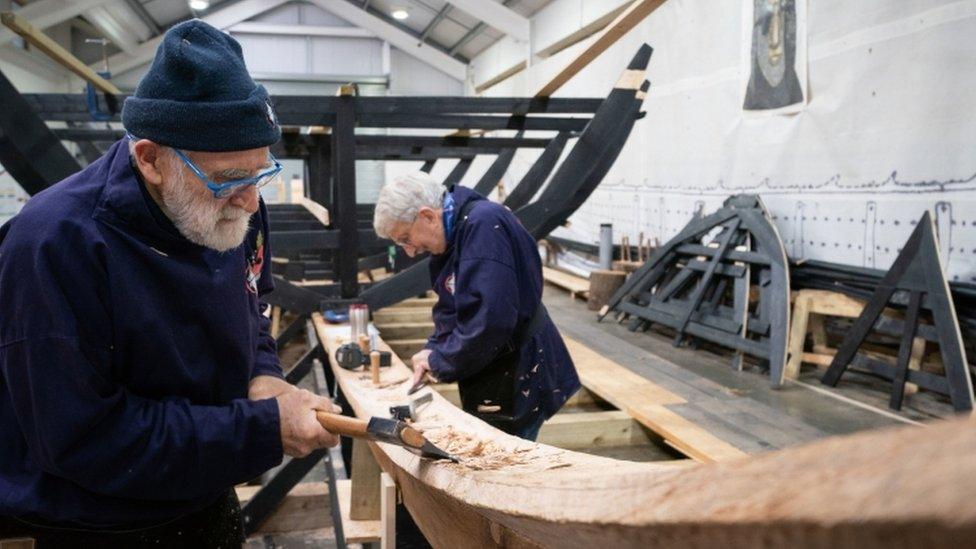
- Published10 November 2021
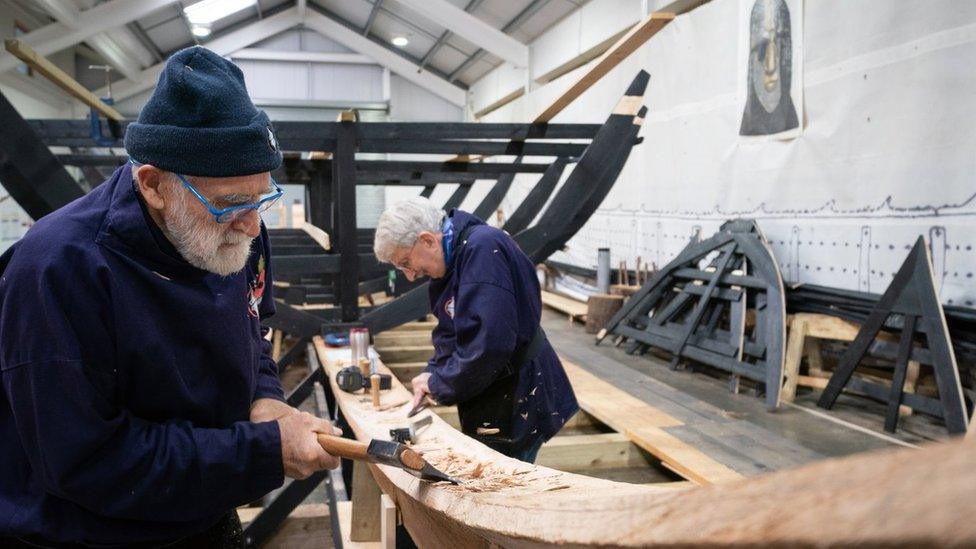
- Published16 September 2021
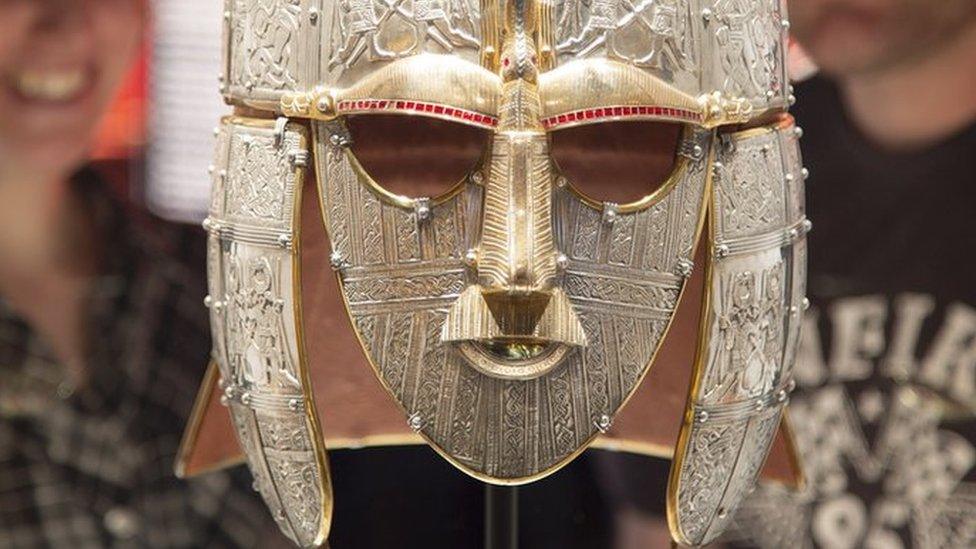
- Published27 June 2021
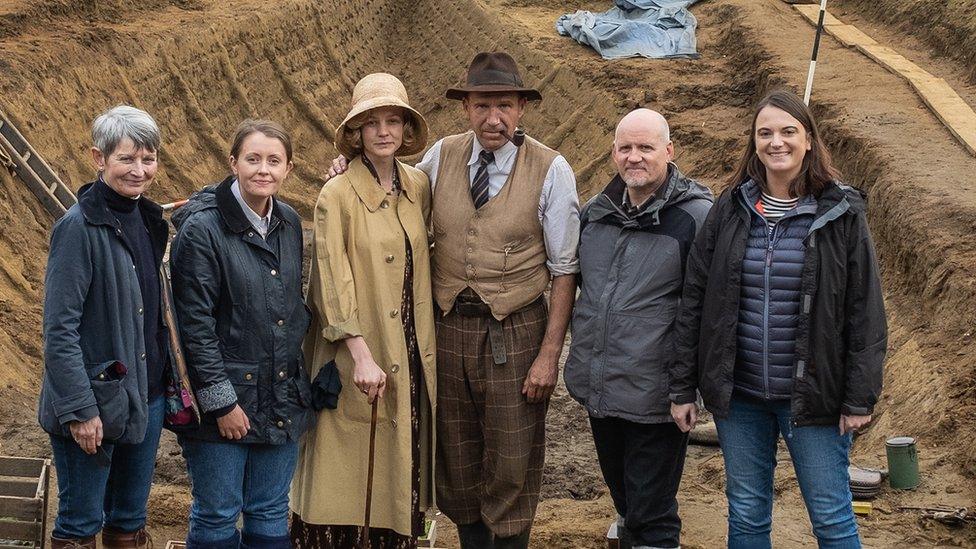
- Published17 January 2021
